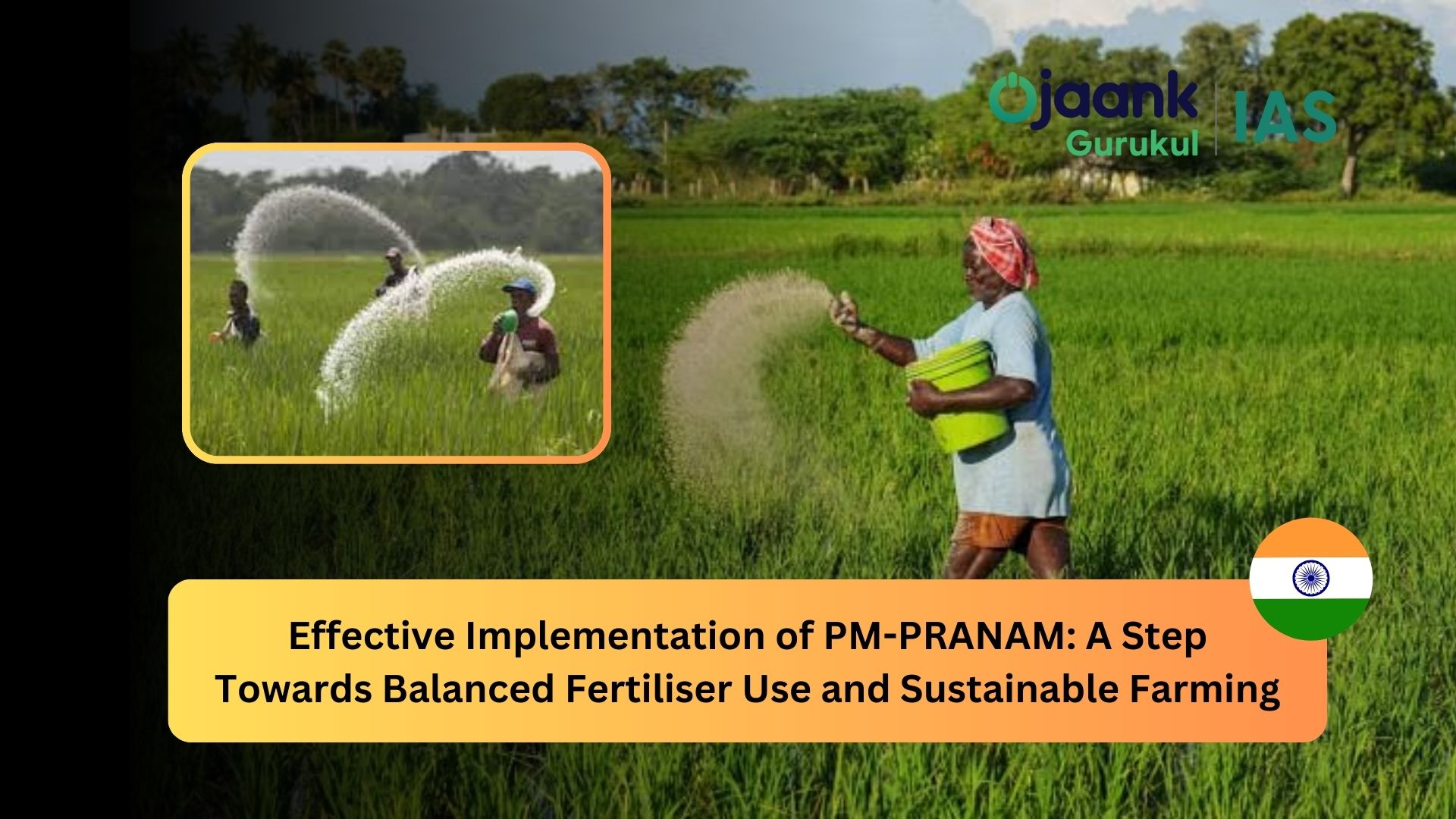Effective Implementation of PM-PRANAM: A Step Towards Balanced Fertiliser Use and Sustainable Farming

Introduction
The escalating costs of fertiliser subsidies in India demand innovative solutions to ensure both farmer welfare and sustainable farming practices.
The PM-PRANAM (PM Programme for Restoration, Awareness Generation, Nourishment, and Amelioration of Mother Earth) is a pivotal initiative aimed at reducing chemical fertiliser usage while promoting balanced and sustainable alternatives.
Despite its potential, successful implementation of this scheme requires strategic efforts, robust monitoring, and mass awareness programs.
Fertiliser Subsidy Trends in India
In recent years, fertiliser subsidies have surged, with the Union Cabinet extending the special package on Diammonium Phosphate (DAP) till December 2025, allocating ₹3,850 crore to ensure affordability for farmers.
Over 11 million farmers benefited from fertiliser subsidies in 2023-24 and 2024-25, highlighting the program's critical role in agriculture.
However, challenges persist. The Economic Survey 2023-24 identified issues such as subsidy diversion for non-agricultural purposes, lack of integration of fertiliser outlets with land ownership data, and absence of usage caps per farmer. Addressing these challenges is vital for achieving the scheme's objectives.
PM-PRANAM: Objectives and Salient Features
Approved by the Cabinet Committee on Economic Affairs in 2023, PM-PRANAM aims to:
- Encourage balanced use of chemical fertilisers.
- Promote alternative fertilisers like Fermented Organic Manure (FOM), Phosphate Rich Organic Manure (PROM), and urea gold.
- Advance natural and organic farming practices.
- Foster soil and resource conservation.
Key Features:
- Incentivising States: States reducing chemical fertiliser consumption are rewarded with grants based on subsidy savings.
- Grant Allocation: 50% of subsidy savings are distributed as grants, with 65% earmarked for capital projects and 30% for awareness programs.
- Monitoring and Research: 5% of the grant is reserved for capacity building and research by the Centre.
Current Status and Challenges
While guidelines for PM-PRANAM have been circulated to states, detailed data on state-wise savings and implementation progress remain limited. Strategic integration with initiatives like the Viksit Bharat Sankalp Yatra has been undertaken, but the pace of adoption varies.
Key challenges include:
- Low farmer awareness about alternative fertilisers.
- Resistance to shifting from chemical fertilisers to organic options.
- Absence of a uniform framework for monitoring progress.
Recommendations for Effective Implementation
To ensure PM-PRANAM’s success, dedicated efforts and a multi-pronged strategy are essential:
- Mass Awareness Campaigns: Educate farmers on the long-term benefits of soil health and alternate fertilisers.
- State-Specific Strategies: Focus on states excelling in organic farming (Madhya Pradesh, Maharashtra) and natural farming (Himachal Pradesh, Gujarat).
- Robust Monitoring Framework: Strengthen data integration with the Integrated Fertiliser Management System (iFMS).
- Incentivise Behavioural Change: Develop capacity-building programs to encourage farmers to adopt sustainable practices.
- Private Sector Collaboration: Partner with fertiliser companies for market promotion of organic alternatives.
Conclusion
PM-PRANAM is a visionary initiative with the potential to transform India’s agricultural landscape by balancing fertiliser use, reducing subsidies, and promoting sustainable farming. However, its success hinges on strategic implementation, robust monitoring, and sustained awareness efforts.
A collective push from the Centre, States, and farming communities is essential to achieve the scheme's goals and ensure the long-term health of India's soil and agricultural economy.
Stay updated on transformative agricultural policies like PM-PRANAM. Share this article to spread awareness about sustainable farming and balanced fertiliser use. Together, let’s nurture a healthier, greener future for India!
Read More:
How India Can Lead the Global Startup Ecosystem | Policies & Innovations